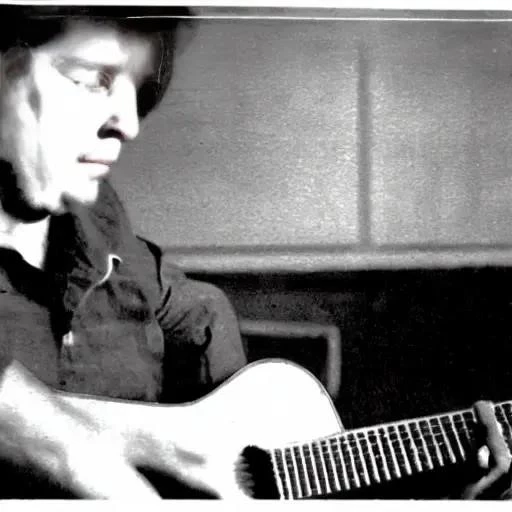
The world of music, a vibrant tapestry woven from countless notes and rhythms, constantly invites exploration․ For guitarists, the instrument itself presents an infinite canvas for sonic artistry․ While standard E-A-D-G-B-E tuning remains the bedrock for countless melodies, venturing beyond this familiar territory often unlocks unprecedented creative potential․ One incredibly effective, yet frequently overlooked, technique is tuning your guitar half step down․ This subtle shift, lowering each string by a single semitone, transforms your instrument, imbuing it with a richer, darker tonal quality that can profoundly alter your musical expression and inspire entirely new compositions․
Embracing a half-step down tuning, where your strings descend to Eb-Ab-Db-Gb-Bb-Eb, is more than just a minor adjustment; it’s an invitation to a deeper, more resonant soundscape․ This method, historically favored by blues legends, hard rock titans, and metal pioneers alike, offers tangible benefits beyond mere aesthetic preference․ The slightly reduced string tension makes bends and vibratos feel remarkably fluid, easing the physical demands on your fingers during intricate passages․ Furthermore, for vocalists, this lower pitch can be a godsend, providing a more comfortable key for singing without requiring complex transpositions, thereby expanding your repertoire and performance comfort significantly․
| Category | Details |
| Description | Half-step tuning (also known as “half-step down” or “Eb Standard” tuning) is a guitar tuning where each string is lowered by a semitone (half step) from standard E Standard tuning․ This results in the strings being tuned to Eb (D#), Ab (G#), Db (C#), Gb (F#), Bb (A#), Eb (D#) from lowest to highest․ |
| Half-Step Down | Eb-Ab-Db-Gb-Bb-Eb (from lowest to highest string) |
| Benefits | Deeper Tone: Lower string tension often translates to a richer, fuller sound with enhanced bass response․ Vocal Comfort: Provides a slightly lower key, easing vocal strain for many singers․ Unique Feel: Strings are slightly looser, facilitating expressive bends and vibrato․ Genre Versatility: Widely used in rock, metal, blues, and even some jazz, offering distinct sonic characteristics․ |
| Common Uses | Ideal for genres seeking a heavier, darker sound (e․g․, hard rock, heavy metal, stoner rock, blues-rock)․ Facilitates playing in certain keys for vocalists․ Allows for unique chord voicings and riff construction․ |
| Recommended Tool(s) | A reliable electronic tuner (clip-on, pedal, or app-based) is crucial․ Some players also find heavier gauge strings beneficial for increased tension and better tone in lower tunings․ |
| Considerations | While beneficial, half-step down tuning means all notes will be one semitone lower than standard․ When playing with others, ensure everyone is aware of the tuning, or be prepared to transpose․ String gauge adjustments might be needed for optimal tension․ |
| How-To Guide | Use a Reliable Tuner: Essential for accuracy․ Pedal tuners, clip-on tuners, or even smartphone apps work well․ 2․ Start with the Low E String: Pluck the low E string․ Your tuner will display the note․ Tune it down until it reads “Eb” (or D#)․ 3․ Tune Remaining Strings: Proceed to the A string, tuning it down to Ab․ Continue with D to Db, G to Gb, B to Bb, and finally high E to Eb․ 4․ Double-Check: Once all strings are tuned, go back and re-check each string․ Adjust as necessary, as tuning one string can slightly affect the tension and pitch of others․ 5․ Play! Experiment with chords and riffs to get a feel for the new sound․ |
| Recommended Reading | UberProAudio ー Half Step Down Tuning, Premier Guitar ‒ Alternate Tunings Guide |
| Reference Link(s) | Wikipedia ー Half-Step Down Tuning |
So, how does one embark upon this journey to a lower tonal realm? The process is remarkably straightforward, requiring only a reliable electronic tuner and a dash of patience․ Begin by engaging your tuner and plucking your guitar’s lowest string, the thick E string․ Instead of stopping at E, meticulously detune it until your tuner proudly displays “Eb” (or D#)․ This fundamental step sets the stage for the resonant transformation to come․ Subsequently, move to the next string, the A, carefully lowering its pitch until it registers as “Ab․” Continue this methodical process across all six strings: D to Db, G to Gb, B to Bb, and finally the high E string to Eb․
Once your instrument is perfectly tuned to Eb Standard, a profound change in its voice becomes immediately apparent․ The overall character of your guitar will deepen, acquiring a weighty gravitas that resonates with an almost primal power․ This lower tension doesn’t just make bending easier; it also contributes to a slightly longer sustain, allowing notes to ring out with compelling authority․ Consider the legendary riffs of Jimi Hendrix, often played in Eb, or the foundational crunch of countless hard rock anthems – their signature sound is frequently underpinned by this very tuning, lending a robustness and a unique sonic footprint that standard tuning simply cannot replicate․ By embracing this slight detuning, you’re not merely altering pitch; you’re re-sculpting the entire harmonic landscape of your playing․
The true magic of tuning half step down lies in the expansive creative avenues it unveils․ For songwriters, new chord voicings emerge, possessing a darker, more melancholic, or even more aggressive quality, depending on your intent․ Composers seeking to infuse their work with a distinct sonic signature will find Eb Standard an invaluable ally․ It’s akin to adding a new color to an artist’s palette, providing fresh textures and shades previously unattainable․ This isn’t just a technical trick; it’s a gateway to new emotional depths and stylistic explorations․ As the musical landscape continues to evolve, pushing boundaries remains paramount․ Dare to experiment, to step beyond the conventional, and discover the exhilarating possibilities that await by simply tuning half step down․ Your guitar, and your audience, will undoubtedly thank you for it․
